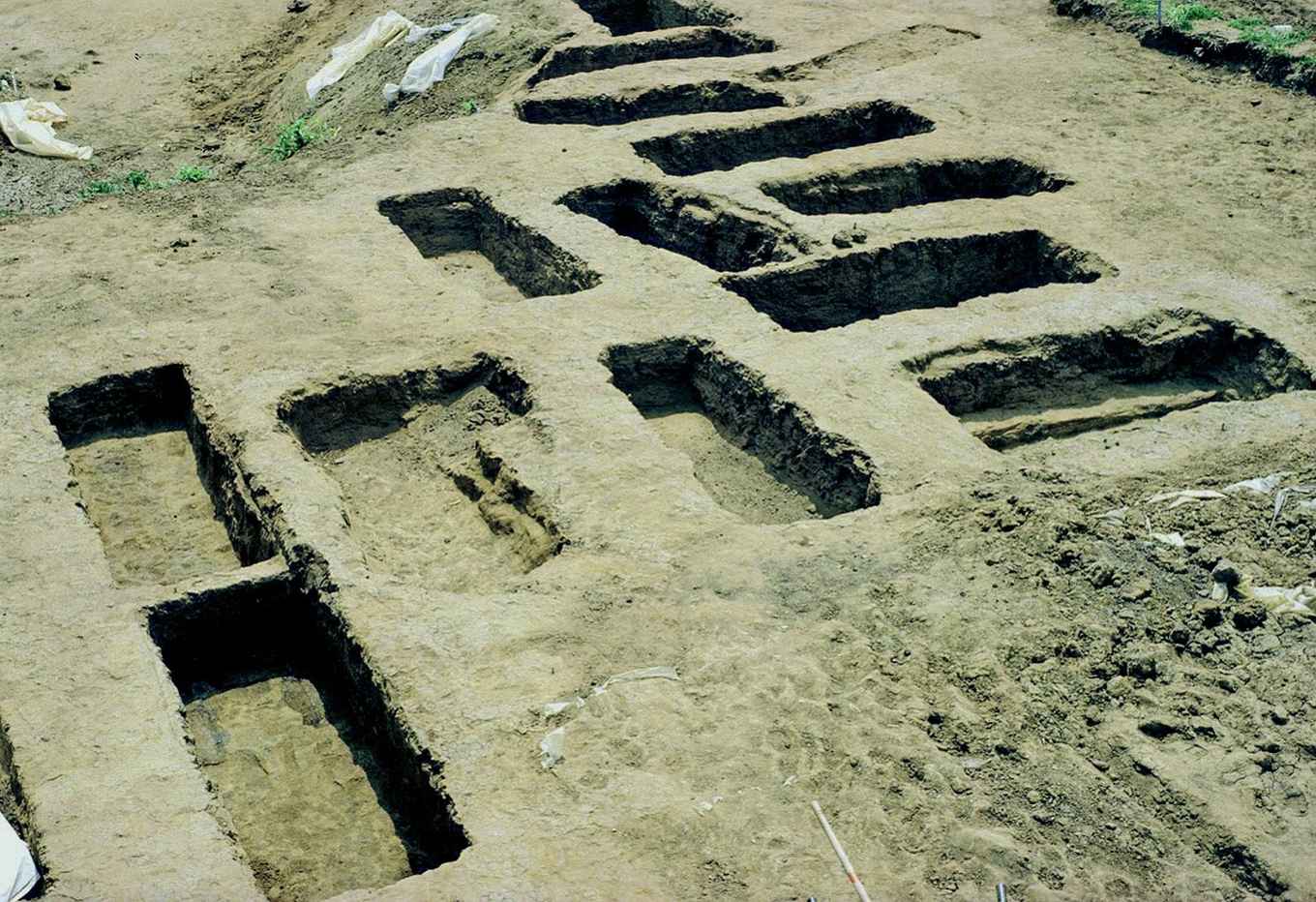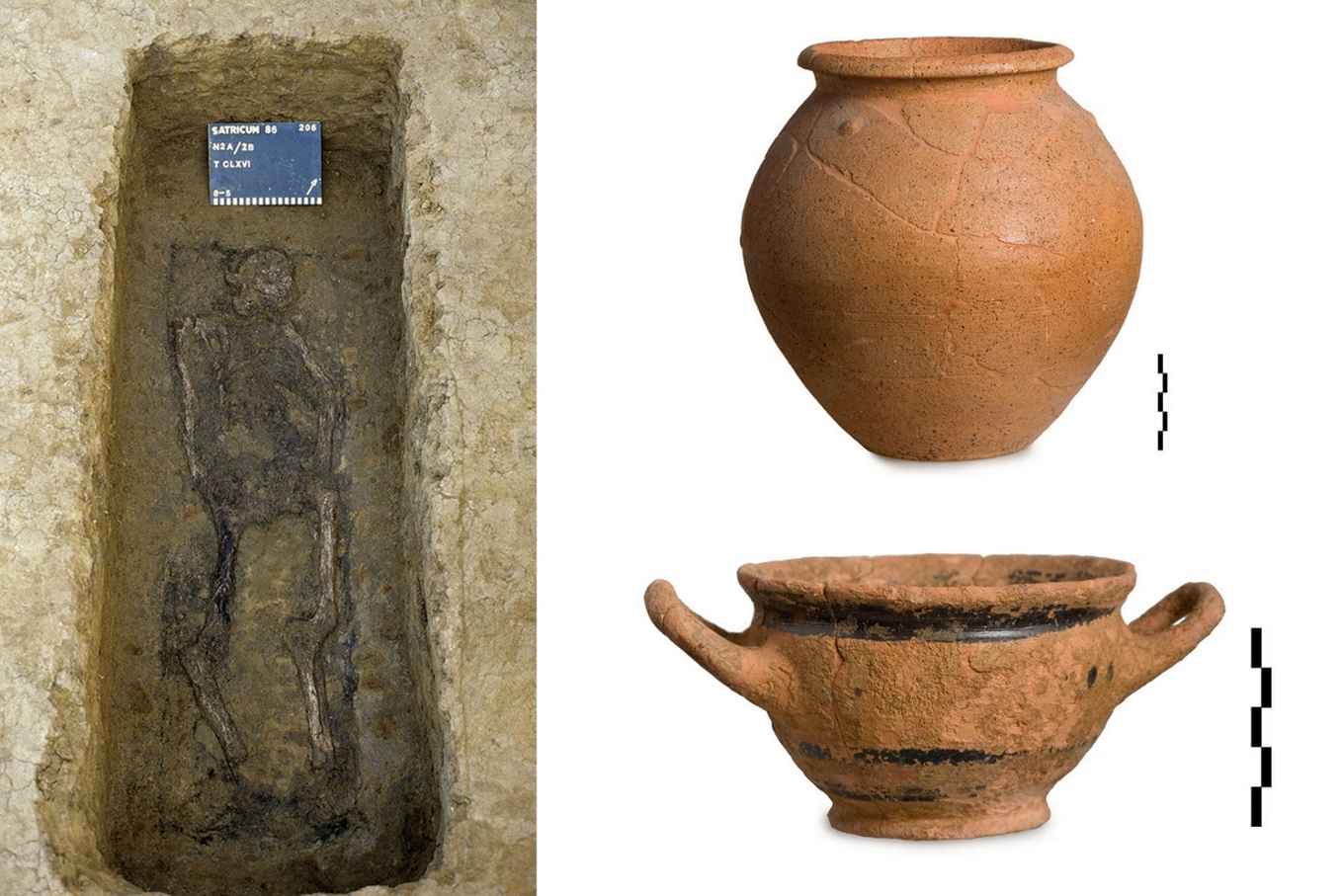Excavations Southwest Necropolis
(1980-1986)

In 1980, a burial ground of at least 200 graves was discovered in the southwest corner of the settlement area of Satricum. The following years a team from the Dutch Institute in Rome examined 167 graves. In contrast with the rich tumuli graves of the Northwest Necropolis these graves had the form of simple rectangular trenches dug out in the pristine ground in which the deceased was buried in a wooden coffin. Some graves showed side benches while others had a niche (loculus) in the wall used for gifts. A third type of grave showed rectangular pits in the four corners at the bottom, in which to sink the legs of the coffin. The grave offerings consisted mainly of simple pottery, in some cases of a personal object like a weapon or a fibula. Among the graves were around twenty graves for children some of which were among the richest of the whole burial ground. Besides pottery these graves often contained miniature lead weapons among which a very fine lead axe bearing an inscription in a non-Latin language identified as Volscian. The skeletons were very badly preserved which made it almost impossible to determine their sex. Dental analysis indicated that most skeletons were from young adults and that the community they were part of used a diet low on carbohydrates. The spatial grouping of several graves points to family units. The pottery from the graves is dated to the 5th and early 4th centuries BC, with parallels in the acropolis burials and those in the lower settlement area, Poggio dei Cavallari. The burials have been attributed to the Volscians, an indigenous community that captured Satricum in 488 BC according to some ancient writers.
The Southwest Necropolis was published in 1992 by M. Gnade.
